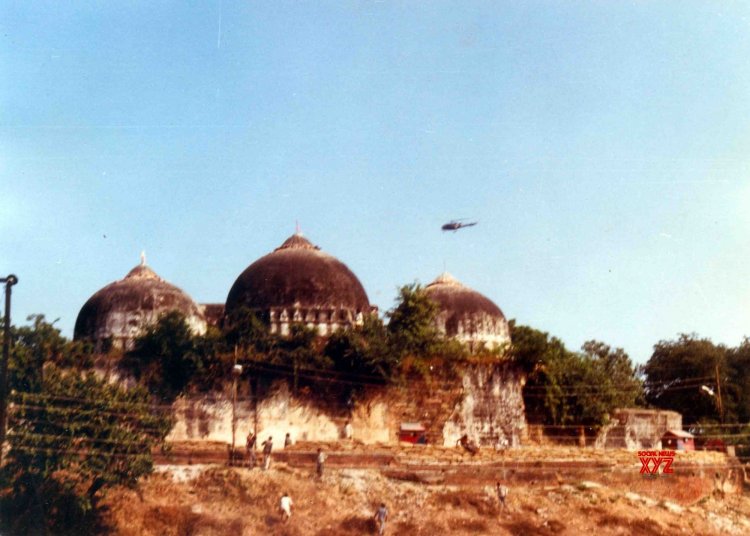NO CLOSURE IN SIGHT FOR THE AYODHYA ISSUE

Any hope that the judicial acquittal of the 30-odd BJP leaders of the charge of criminal conspiracy in the Babri masjid demolition case will ring the curtains down on the three-decade-old issue has been belied by subsequent events.
For one, the Congress has criticized the judgment for going against the Supreme Court’s castigation of the demolition as a crime. For another, several Muslim organizations have decided to appeal against the verdict, which means that the case will drag on. The likely fallout of this continuation may well be an increased Hindu-Muslim polarization which cannot but vitiate the social and political atmosphere.
For the BJP and its opponents, the demolition remains a subject over which there is no meeting of minds. Neither the verdict, nor the building of the Ram temple in Ayodhya, has brought any relief. The Ayodhya controversy, therefore, remains as potent as ever. There is no closure.
The reason why the two sides are far apart is that the issue lies at the heart of their differing perceptions of the “idea” of India. While the BJP and the Hinduva brotherhood led by the RSS believe that the nation’s Hindu civilization has been under attack from the medieval times from Muslim invaders and that the Babri masjid was a symbol of that assault, the Left-Liberal and secular camp is of the opinion that the invaders gradually became an integral part of the native ambience, leading to the formation of a composite culture, the so-called Ganga-Jumni tehzeeb or ethos.
But there is more to these varying views. For the saffron crowd, the appeasement of the Muslims in the name of their commonality with Hindus had so emboldened them as to bring about a partition of the country. It was time, therefore, to show them their place.
And the first step in this direction, according to the saffron lobby, was to bring down the mosque in Ayodhya, which was built by Mughal emperor Babur as an affront to the Hindus by choosing the very spot which was believed to be the birthplace of Lord Ram.
BJP leader L.K. Advani’s 1990 rath yatra or chariot ride was intended to accomplish this purpose by mobilizing public opinion in favour of dismantling the mosque. Although he was arrested by Laloo Prasad Yadav’s government in Bihar, thereby preventing him from reaching Ayodhya, he had set in motion the start of the movement to “liberate” the Hindu deity’s birthplace.
The mosque’s demolition less than two years later can be said, therefore, to have been the result of Advani’s rath yatra. It is this connection which has made the judge who investigated the incident, M.S. Liberhan, describe as a “farce” the latest court ruling exonerating Advani and others.
True, Advani claims that he had repeatedly asked the saffron storm-troopers who had entered the mosque not to damage it. But the fact that he and other senior BJP leaders had gathered there could not but be interpreted by the Hindutva cadres as a call for action even if they were later accused of being out-of-control (by Advani) and their attack on the protected monument as a spontaneous act (by the court).
But whether out-of-control or sponyaneous, the BJP’s happiness over the verdict suggests that it sees the judgment as yet another step in the direction of implanting its own “idea” of India on the country. The party may even secretly welcome the decision of a section of the Muslims to go to court, for such a move will keep the issue alive and further widen the Hindu-Muslim gulf.
For all the proclamations of an inclusive society advancing in unison towards the goal of development – sabka saath, sabka vikas – the driving force of the BJP’s politics is the fostering of anti-Muslim (and also anti-Christian) sentiments. The nurturing of this prejudice has not only helped the party win seats in legislatures, it has also diverted public attention from the problems of unemployment and the persistence of the corona pandemic.
It goes without saying that this tactic of demonizing a particular community is typical of all right-wing parties whether in America where the parties are perceived as comprising white supremacists or in Europe where they are viscerally anti-immigrant and also Islamophobic like the BJP’s hard core.
For the BJP’s opponents, taking a stand against the targeting of minorities in India is problematic lest they be accused of being anti-national or even pro-Pakistani since the average BJP supporter tends to see Indian Muslims as being a fifth-columnist in league with Pakistan.
The verbal and material support which Pakistan gives to the Kashmiri separatists helps to perpetuate the perception of Indian Muslims as being hand-in-glove with the enemy in the neighbourhood.
From the abrogation of Article 370, therefore, which deprived Kashmir of its special status, to the Ayodhya verdict, which absolved the BJP leaders of any guilt or responsibility for tearing down a mosque, there is a clear narrative of asserting Hindu dominance.
For all practical purposes, the RSS-led Sangh parivar, of which the BJP is a part, can be said to be well on its way of fulfilling its dream of establishing a Hindu rashtra (nation) in India.
For the Left-Liberals and secularists, such a turn of events will be a betrayal of not only the Constitution, but also of India’s age-old pluralism which dates back to the Mauryan emperor, Asoka (273-232 B.C), and the Mughal emperor Akbar (1556-1605).















